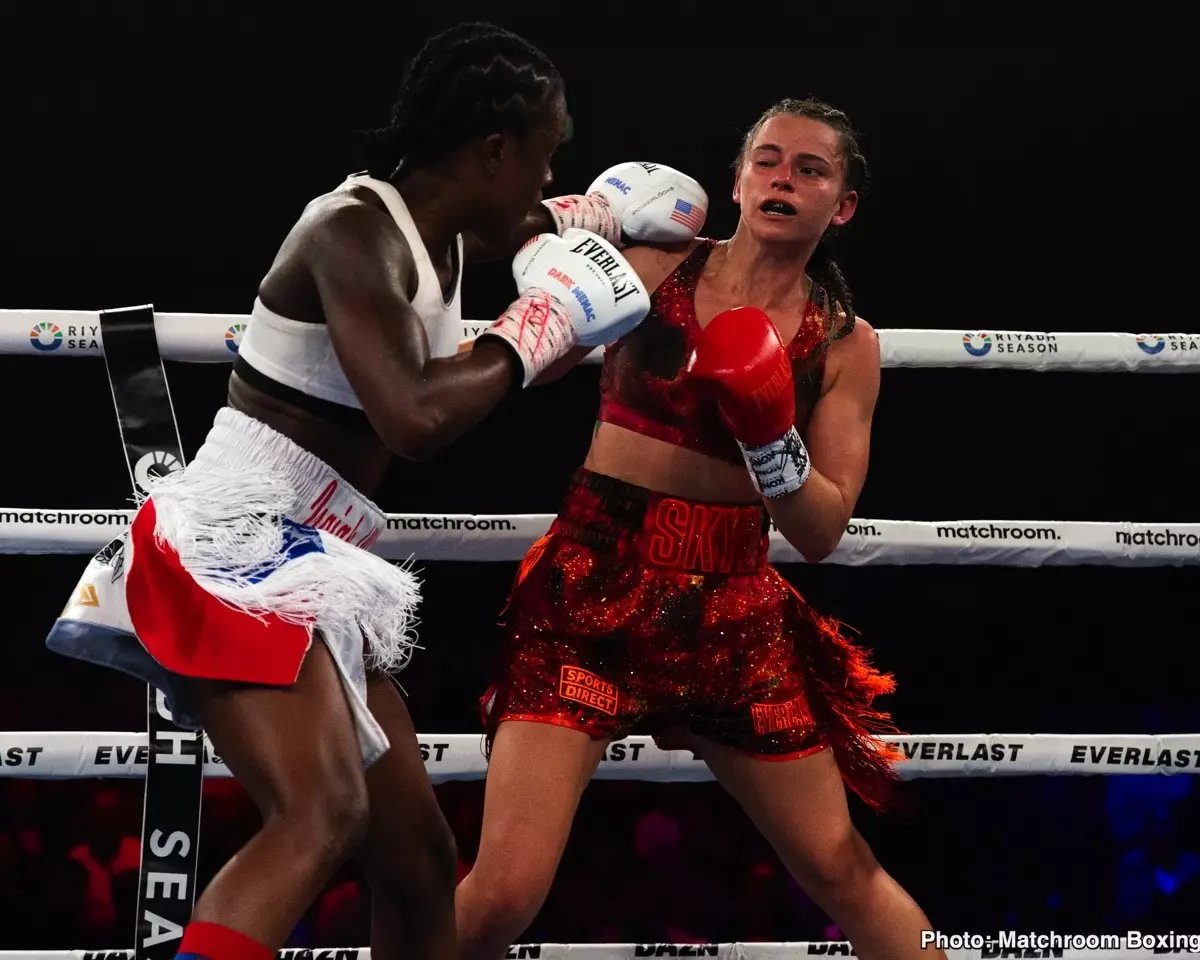In a night that was supposed to be a defining moment for Australian boxing, promoter Eddie Hearn was left grappling with disappointment after WBC world female featherweight champion Skye Nicolson faced a stunning defeat. Losing to Tiara Brown by a split decision at the Qudos Bank Arena in Sydney, Nicolson’s performance has raised critical questions in the combat sports community. Hearn’s assertion that the fight could have easily swayed in Nicolson’s favor presents a commentary on how subjective the outcome of a box match can often be—a sentiment echoed by many in the audience who witnessed the bout.
The scoring, distinctive and controversial, reflected discrepancies that mirrored the fight itself. With one judge favoring Nicolson in contrast to two scoring it for Brown, it left the audience and analysts questioning the integrity of the judging process. Hearn emphatically stated that the fight seemed “pretty one-sided” in Brown’s favor. The disparity of the scorecards has ignited discussions not only around Nicolson’s capabilities but also about the fairness of the judging process in high-stakes matches where home-ground advantage can skew perceptions.
The Fight Breakdown
In analyzing the fight, it’s essential to note the contrasting styles of both fighters—Nicolson’s defensive, hit-and-run tactics versus Brown’s aggressive, forward-pressing approach. While Nicolson’s strategy aims to outmaneuver her opponents, Brown came in with an offensive game that maintained pressure throughout the match, leaving little room for Nicolson to breathe. The effectiveness of aggression in boxing cannot be overstated; it grabs the attention not just of the audience but crucially of the judges, who may subconsciously favor the fighter dictating the tempo of the bout.
Hearn pointed to critical rounds as being pivotal to the fight’s outcome, claiming he believed Nicolson won the last two rounds convincingly. This commentary spotlights the inherent complexities in scoring boxing matches: how are judges to interpret the momentum within a round? It’s a question that has historically plagued the sport. The fight’s scoring ultimately underscored a lack of unanimous agreement regarding which fighter established more impact and presence between the ropes, resulting in heightened scrutiny over the judging.
Implications for Women’s Boxing
This match isn’t merely a disappointment for Nicolson but raises larger implications for women’s boxing. As female athletes continue to strive for recognition in a sport often dominated by male fighters, outcomes like this can overshadow their accomplishments and undermine their artistry within the ring. Nicolson, despite being the reigning champion, now faces questions beyond her skill set: is there a systemic bias that limits how female boxers are evaluated and scored?
Hearn’s incredulity at the Australian judge’s scoring choices suggests a broader issue: the pressure judges may feel to conform to certain expectations, especially in home-ground matches. Can we expect impartiality when local pride is at stake? The scrutiny falls not just on Nicolson and Brown but on the entire judging ethos within the sport, challenging stakeholders to consider reforms that ensure equity in scoring—particularly for women who have fought tenaciously to have their labor recognized on par with their male counterparts.
The Path Forward
As boxing moves forward from this controversial event, both Nicolson and Brown find themselves at crucial crossroads in their careers. While Brown remains unbeaten with a record that bolsters her confidence, Nicolson must reassess her strategies and perhaps re-evaluate her training methodology to translate her reputation into winning performances. The aftermath of this fight becomes a learning opportunity for both fighters; while Brown must refine her skills to maintain her ascendant path, Nicolson now has the chance to showcase resilience that defines champions.
Boxing is as much about numbers and knockouts as it is about narrative and legacy. Hearn’s grappling with the fight outcome provides an entry point into the ongoing dialogue: how are we contextualizing the success of female fighters, and how do we ensure that their battles, both literal and metaphorical, receive the recognition they deserve? The consequences of this bout extend beyond the ring, urging a re-examination of how we perceive and judge talent, performance, and, ultimately, success in a rapidly evolving sporting landscape.

